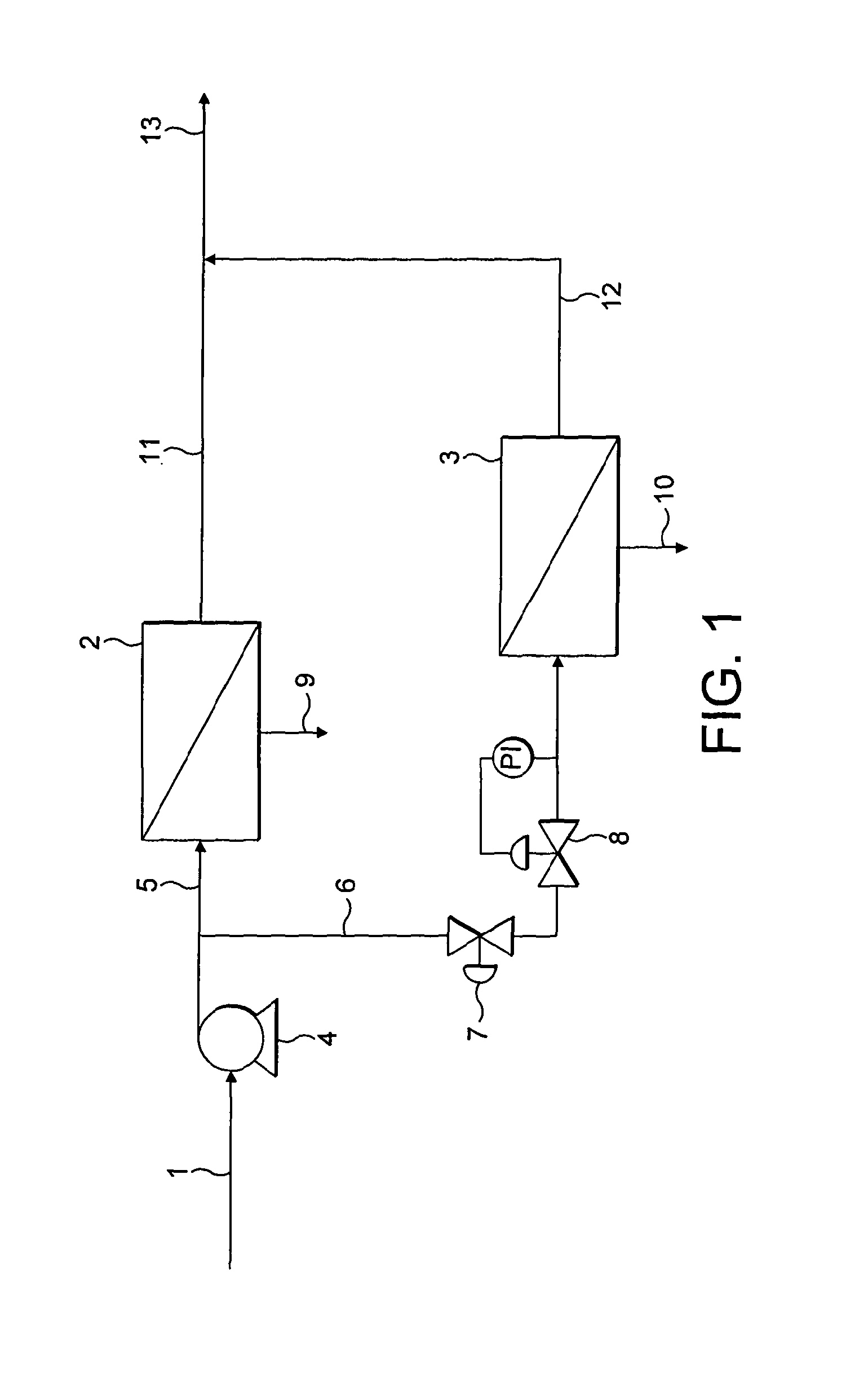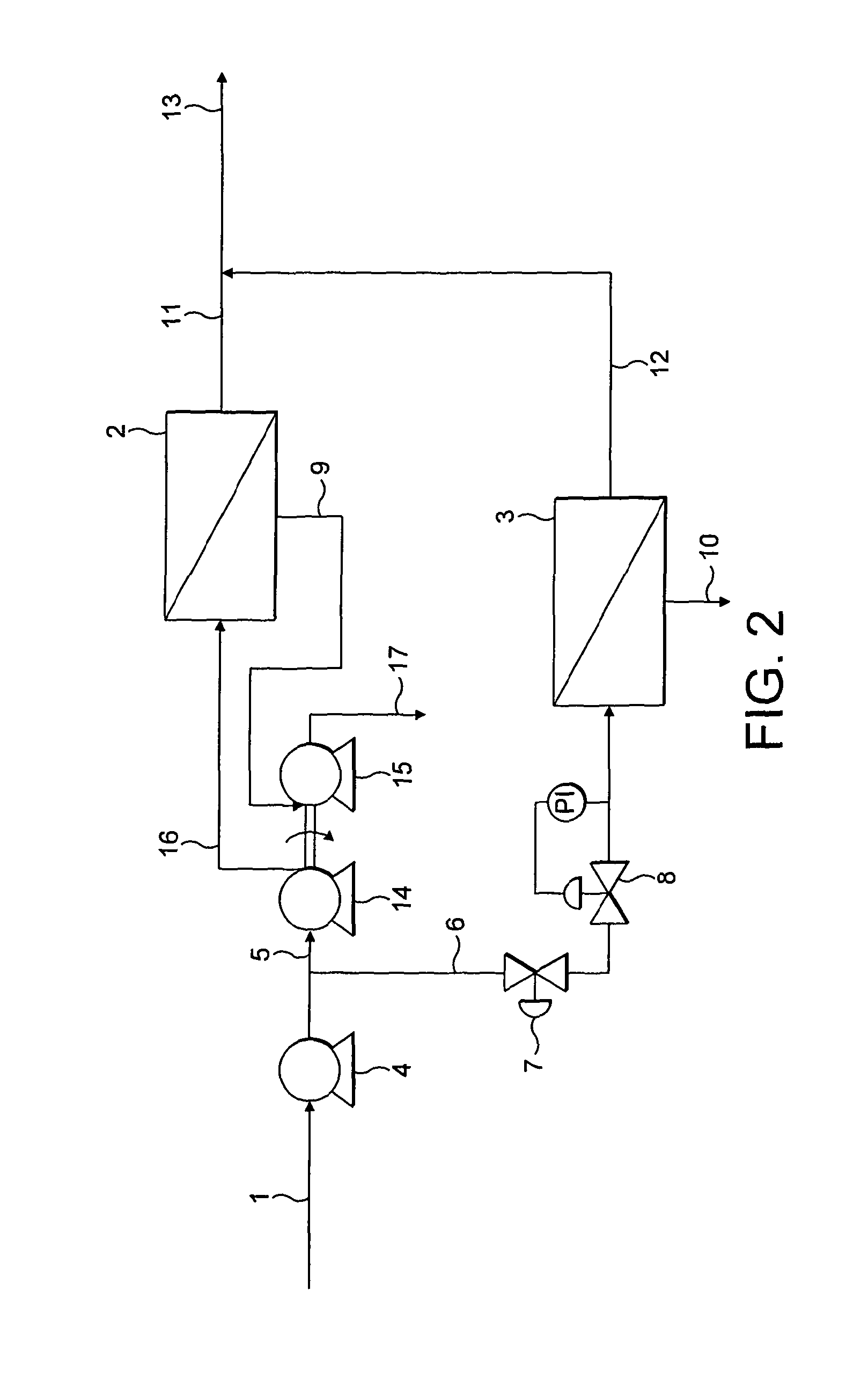Process of supplying water of controlled salinity
a technology of controlled salinity and water supply, which is applied in the direction of reverse osmosis, quary waste water treatment, membranes, etc., can solve the problems of inability to mix desalinated water of low multivalent cation content, damage to oil, and inability to inhibit oil recovery
- Summary
- Abstract
- Description
- Claims
- Application Information
AI Technical Summary
Benefits of technology
Problems solved by technology
Method used
Image
Examples
example 1
[0085]A low salinity injection water stream may be prepared from a source water having a TDS content of 35,800 ppm, a sulfate anion concentration of 2,750 ppm and a multivalent cation concentration (sum of the calcium and magnesium cation concentrations) of 1830 ppm by feeding the source water at a rate of 320 thousand barrels of water per day (mbwd) to a desalination plant comprising a plurality of RO membrane units and a plurality of NF membrane units. The source water feed was divided to provide an RO feed water for the RO membrane units (310 mbwd) and an NF feed water for the NF membrane units (10 mbwd). The RO membrane units were operated at a pressure of 1000 psi absolute and a recovery of 50% by volume to provide 155 mbwd of an RO permeate stream having a TDS of 177 ppm, a sulfate anion concentration of 1.5 ppm and a multivalent cation concentration of 2.5 ppm. The NF feed water for the NF membrane units was reduced in pressure via a pressure let down valve to a pressure of 4...
example 2
[0086]A low salinity injection water stream may be prepared from a source water having a TDS content of 35,800 ppm, a sulfate anion concentration of 2,750 ppm and a multivalent cation concentration (sum of the calcium and magnesium cation concentrations) of 1830 ppm by feeding the source water at a rate of 320 thousand barrels of water per day (mbwd) to a desalination plant comprising a plurality of RO membrane units and a plurality of NF membrane units. The source water feed was divided to provide an RO feed water for the RO membrane units (261.4 mbwd) and an NF feed water for the NF membrane units (58.6 mbwd). The RO membrane units were operated at a pressure of 1000 psi absolute and a recovery of 50% by volume to provide 130.7 mbwd of an RO permeate stream having a TDS of 177 ppm, a sulfate anion concentration of 1.5 ppm and a multivalent cation concentration of 2.5 ppm. The NF feed water for the NF membrane units was reduced in pressure via a pressure let down valve to a pressur...
PUM
| Property | Measurement | Unit |
|---|---|---|
| pressure | aaaaa | aaaaa |
| pressure | aaaaa | aaaaa |
| pressure | aaaaa | aaaaa |
Abstract
Description
Claims
Application Information
 Login to View More
Login to View More - R&D
- Intellectual Property
- Life Sciences
- Materials
- Tech Scout
- Unparalleled Data Quality
- Higher Quality Content
- 60% Fewer Hallucinations
Browse by: Latest US Patents, China's latest patents, Technical Efficacy Thesaurus, Application Domain, Technology Topic, Popular Technical Reports.
© 2025 PatSnap. All rights reserved.Legal|Privacy policy|Modern Slavery Act Transparency Statement|Sitemap|About US| Contact US: help@patsnap.com



